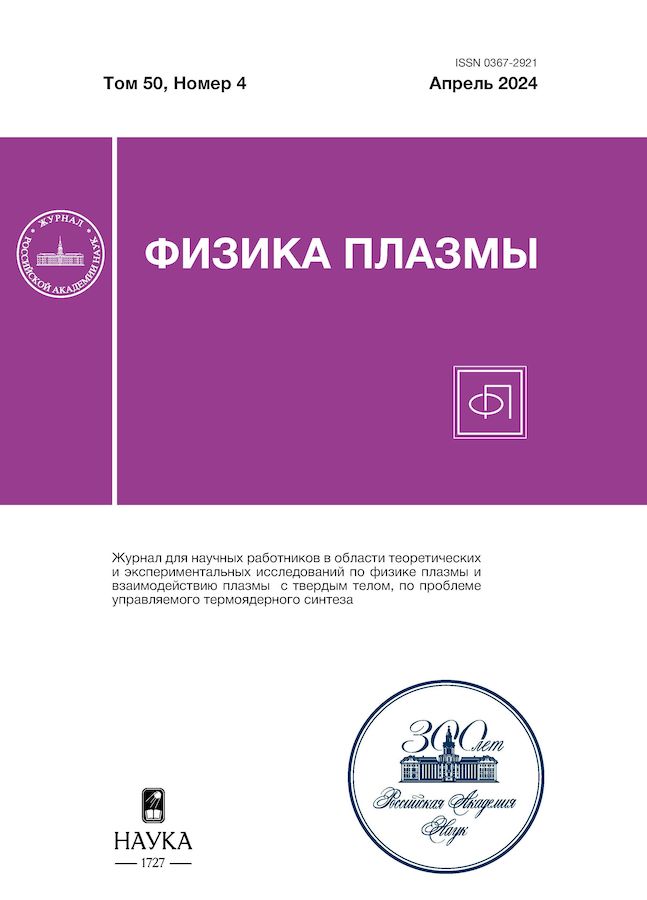Simulations of TRT Vacuum Vessel Effect on the Magnetic Diagnostics System Sensor Signals
- Authors: Belov A.M.1,2, Andreev V.F.1, Sushkov A.V.1
-
Affiliations:
- National Research Centre “Kurchatov Institute”
- State Scientific Center of the Russian Federation “Troitsk Institute of Innovative and Thermonuclear Research”
- Issue: Vol 50, No 4 (2024)
- Pages: 427-441
- Section: TOKAMAKS
- URL: https://ter-arkhiv.ru/0367-2921/article/view/668782
- DOI: https://doi.org/10.31857/S0367292124040056
- EDN: https://elibrary.ru/QDNYCD
- ID: 668782
Cite item
Abstract
The results of model numerical calculations are presented, showing the effect of the TRT vacuum vessel on the amplitudes and phases of the magnetic sensors signals, which are located on the inner and outer vacuum vessel surfaces. It is shown that the characteristic times of loop voltage sensors considerably depend on their position on the TRT vacuum vessel. Therefore, their accurate mutual matching is required, especially in the dynamic stage of the discharge, when high eddy currents are induced in the vacuum vessel. The results of numerical calculations for the case of periodic disturbances in the plasma column are presented. They showed that the vacuum vessel almost completely shields the signals of the magnetic sensors located on the outer surface of the vacuum vessel. Moreover, it affects not only the amplitudes of magnetic sensors signals, but also their phases. Numerical studies brought us to conclusion that it is of priority to install the magnetic sensors just on the inner surface of the TRT vacuum vessel.
About the authors
A. M. Belov
National Research Centre “Kurchatov Institute”; State Scientific Center of the Russian Federation “Troitsk Institute of Innovative and Thermonuclear Research”
Author for correspondence.
Email: abelov@triniti.ru
Russian Federation, Moscow, 123098; Moscow, 108840
V. F. Andreev
National Research Centre “Kurchatov Institute”
Email: abelov@triniti.ru
Russian Federation, Moscow, 123098
A. V. Sushkov
National Research Centre “Kurchatov Institute”
Email: abelov@triniti.ru
Russian Federation, Moscow, 123098
References
- Красильников А. В., Коновалов С. В., Бондарчук Э. Н., Мазуль И. В., Родин И. Ю., Минеев А. Б., Кузьмин Е. Г., Кавин А. А., Карпов Д. А., Леонов В. М., Хайрутдинов Р. Р., Кукушкин А. С., Портнов Д. В., Иванов А. А., Бельченко Ю. И., Денисов Г. Г. // Физика плазмы. 2021. Т. 47. С. 970.
- Кадомцев Б. Б. // УФН. 1967. Т. 91. С. 381.
- Strait E. J. // Rev. Sci. Instrum. 2006. V. 77. P. 023502.
- Moret J.-M., Buhlmann F., Fasel D., Hofmann F., Tonetti G. // Rev. Sci. Instrum. 1998. V. 69. P. 2333.
- Edlington T., Martin R., Pinfold T. // Rev. Sci. Instrum. 2001. V. 72. P. 421.
- Lee S. G., Bak J. G., Ka E. M., Kim J. Y., Hahn S. H. // Rev. Sci. Instrum. 2008. V. 79. P. 10F117.
- Coccorese V., Albanese R. // Rev. Sci. Instrum. 2004. V. 75. P. 4311.
- Sushkov A. V., Belov A. M., Igonkina G. B., Kachkin A. G., Khayrutdinov E. N., Melnikov A. V., Sokolov M. M. // Fusion Engineering Design. 2019. V. 146. P. 383.
- Никифоров А. Ф., Уваров В. Б. Специальные функции математической физики. М.: Наука. 1978.
- Тихонов А. Н., Арсенин В. Я. Методы решения некорректных задач. М.: Наука, 1988.
- Kendall E. Atkinson. An Introduction to Numerical Analysis (2nd ed.). New York: John Wiley & Sons, 1989.
- Корн Г., Корн Т. Справочник по математике для научных работников и инженеров. М.: Физматгиз, 1968.
- Медведев С. Ю., Мартынов А. А., Коновалов С. В., Леонов В. М., Лукаш В. Э., Хайрутдинов Р. Р. // Физика плазмы. 2021. Т. 47. С. 998.
Supplementary files











